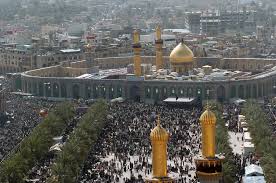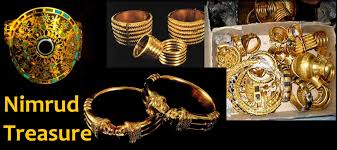Related Topics
Art in Philadelphia
The history of art, particularly painting and sculpture, has been a long and distinguished one. If you add in the art schools, the Philadelphia national influence on artists has been a dominant one.
Historical Preservation
The 20% federal tax credit for historic preservation is said to have been the special pet of Senator Lugar of Indiana. Much of the recent transformation of Philadelphia's downtown is attributed to this incentive.
Foreign Affairs
This topic is under construction. Feel free to watch it evolve.
Whither, Federal Reserve? (2)After Our Crash
Whither, Federal Reserve? (2)
Cultural
Culture and Traditions (2)
Right Angle Club 2010
2010 is coming to a close, a lame-duck session is upon us, and probably after that will come two years of gridlock. But the Philadelphia Men's Club called the Right Angle, keeps right on talking about the current scene. A few of these current contents relate to speeches given elsewhere.
Thieves of Baghdad

|
| Col. Matthew Bogdanos |
Col. Matthew Bogdanos, of the U.S. Marines, gave an interesting insight into what the Baghdad Museum really was, how it was captured, and how the treasures were recovered, at the University of Pennsylvania Museum the other night. Our own museum is said to be the second largest archeology museum in the world, after the British Museum. After discovering what was really in the Baghdad museum, that ranking may have to be revised; but the chief Philadelphia interest traces back to the discovery of the ancient city of Ur by Philadelphia archeologists during the last century, an event which essentially created the University Museum. This was where civilization began, and we discovered it.
The reserve Colonel happens to be a prosecutor for the New York District Attorney, was trained extensively in classical antiquities; and so was the perfect point man to lead the capture of the Museum during the Iraq war, very well suited to follow the looted treasures into the international antiques market -- and recover substantially all of it. Something like 62,000 pieces were recovered, and all of Nimrud's Treasure, the prize possession of the museum.

|
| The Baghdad Museum |
There has been criticism of our troops -- some of it right out of this evening's Philadelphia audience -- for allowing the place to be looted in the first place. But that sort of assumes the place was lying vacant and undefended while our troops were out shooting innocent civilians. That's a misapprehension quickly dispelled by videotaped scenes of real live shooting and rockets coming out of the place at the time, which the Colonel was happy to display. Questioners were invited to claim they would have been willing to go into that hornet's nest in order to save alabaster statues, but others in the audience inclined to giving the Marines some benefit of doubt.

|
| Hussein Millions |
That place was vandalized when the troops got into it; to say it was thoroughly vandalized is only true in a sense. There was indeed a lot of looting, but the bigger surprise was to find there were hidden storage rooms behind steel bank doors, filled with the really best antiques, as well as vast boxes of American hundred-dollar bills. By weighing the hundred dollar bills (22 pounds for every million dollars) it was estimated that Saddam Hussein had about $800 million in U.S. currency stored in that one place. Gold as a raw commodity has since gone up considerably in value, but many of the best antique gold pieces on display in the museum were only copies, the originals were kept in the secret vaults. The international market appraises quite a few of these pieces at over $10 million apiece. Apparently, the thieves knew exactly which pieces were valuable, and went straight to them without even pausing to notice other rooms full of objects of lesser value. The museum had been closed to the public for the previous twenty years; it seems rather obvious that Saddam was storing these objects in order to buy weapons for continuing guerilla activities underground, or in exile. The museum itself consisted of nearly twenty separate buildings in the center of Baghdad, and the custodians obviously must have known where things of serious value were kept, in order to get to them so precisely.

|
| Nimrud's Treasure, |
Offering an amnesty, no questions asked, brought in thousands of recoveries from the local public. Getting other pieces back from art galleries in London, Geneva and Berlin required methods that were not described in detail. Some of us who remember the German and Japanese mementos which were "liberated" during World War II have an immediate appreciation of the improved American troop discipline which must have been imposed in the Iraq War. That's something to think about, too. Our troops had been given extensive training to respect the cultural heritage of the enemy, and they evidently did so to a remarkable degree. One certainly has to doubt that Saddam was locking that material in vaults for twenty years in order to preserve the culture of any sort. If it had any other purpose than to serve as a way of transforming oil wealth into munitions, it's a little hard to imagine what it was.
Originally published: Thursday, April 01, 2010; most-recently modified: Friday, May 31, 2019